

With the determination to unravel the world of Inuyasha once again, the story behind the production of Yashahime: Princess Half-Demon
Translated by: Harley Acres
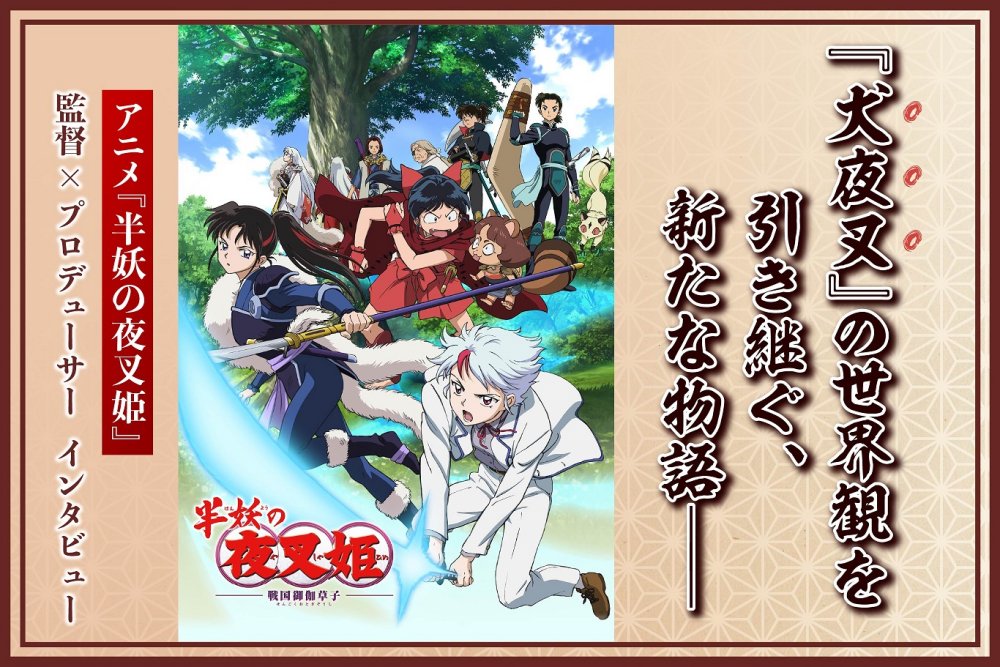
January 16, 2021 18:00
Inuyasha (originally written by Rumiko Takahashi), serialized in Weekly Shonen Sunday (Shogakukan) for 12 years from 1996 to 2008, is a Sengoku era fairy tale centered on the battle between demons, humans, and half-demons over the precious Shikon Jewel.
The anime Inuyasha aired from 2000 to 2004, followed by Inuyasha: The Final Chapter which aired from 2009 to 2010 after the conclusion of the original manga.
It remains a timeless masterpiece beloved worldwide. A new original anime series, Yashahime: Princess Half-Demon, which continues the worldview of Inuyasha, began airing in October 2020. Many Inuyasha fans were surprised by the shocking premise that the protagonist is the daughter of Sesshomaru, a popular character from Inuyasha.
The Inuyasha feel permeates the production, soundtrack, and acting of the cast, and the excitement of seeing new characters mixed with Inuyasha characters on screen, along with the unpredictable and mysterious developments, have once again captured the hearts of fans around the world.
Although one season has passed since the series began airing, the full story is still unclear. We conducted a dialogue with Director Teruo Sato and Producer Toshikazu Naka about the past and future of this intriguing work. [1] Their words exuded their love for Inuyasha and their determination to weave a new story that continues the worldview of the series.
Interview and text by Yurina Goto
Produced by Real Coffee Entertainment
We have prepared some things that Inuyasha fans can enjoy as well.
One season has now passed since the series began airing. Have you both received any feedback?
Naka: The reaction has been amazing, especially on social media.Sato: That's right. I'm also on Twitter, so I get reactions from all over the world. It really does seem like a work that's garnering a lot of attention.
Looking at the comments on the official account, most of them are from overseas. It really brings home to me how popular Inuyasha is worldwide, and I'm doing my best, even though I feel a lot of pressure as Yashahime: Princess Half-Demon is a work that continues that worldview.
The idea for this project came from Michihiko Suwa of ytv Nextry, who served as producer for the anime series Inuyasha and Detective Conan. [2] What did you two think when you first heard about the project?
Naka: It started with the feeling, "Are we going to do a story that was already neatly concluded again?! How are we going to do it?!"When I first heard about it, I still had a vague idea of what kind of story it would be. It was at the level of "Maybe it'll be a story about Sesshomaru's daughter." I thought, "If it's the case, then maybe there's something we can do with that."
Sato: We'd been talking about wanting to do it for two or three years, and Rumiko-sensei, Suwa-san, and the Inuyasha staff had been nurturing it ever since.
However, the Inuyasha story itself ended beautifully, and in the afterword of "Since Then" (a special sequel that follows the story's conclusion), Rumiko-sensei even said something along the lines of, "I have nothing left undone with Inuyasha."
Touching on that was a heavy responsibility, and as an Inuyasha fan myself, it made me think a lot about how to create a new story after a work that ended beautifully.
I knew Inuyasha fans would watch it, so I wanted to release it in a way that was as satisfying as possible, without destroying the Inuyasha that everyone had in their minds.
When thinking of targeting "Yashahime: Princess Half-Demon," are you mainly thinking of Inuyasha fans? Or is it mainly aimed at a new audience that is unfamiliar with Inuyasha?
Naka: First of all, we want people to like our new characters, so in that sense we are conscious of new people.However, it has been a long time since Inuyasha was broadcast, and I think some of the people who loved Inuyasha back then have become parents. I think the ideal situation would be for two generations of parents and children to watch it together: the parents who loved Inuyasha and their children who will be exposed to it as a new work.
Sato: The voice actors who play the three princesses (Towa, Setsuna, and Moroha) are all from the generation that watched Inuyasha as children. They're busy doing the dubbing every week (laughs). I hope that this new target demographic will look back on Inuyasha and think, "The monsters that appear in Yashahime: Princess Half-Demon were in Inuyasha." Conversely, I want people who used to watch Inuyasha to enjoy Yashahime: Princess Half-Demon from the perspective of "Those are the monsters that appeared back then."
To that end, I've sprinkled various devices and elements throughout the work.
Naka: There are also some little things in there that will make fans of Rumiko-sensei's other works smile, like the delinquents who appear in episode 2, or the monkey joke in episode 9.
Sato: Especially when I'm putting characters from Inuyasha into the worldview of Yashahime: Princess Half-Demon, my number one priority is to make sure the image isn't ruined. I don't want viewers to think, "That's not the character I wanted."
Of course, when I put a character in the world, I always have Rumiko-sensei check it at the scenario stage. I incorporate her comments like, "I think this would be good," into the scenario.
Naka: When it comes to featuring characters from Inuyasha, we're careful not to let them eat into the new characters' screen time too much, but at the same time, we're careful not to lower their "status" once they're in the show.
Among fans, the broadcast order of Yashahime: Princess Half-Demon followed by Detective Conan has been a hot topic, as it reminds them of the old Inuyasha followed by Conan order. Was that lineup something that Yomiuri TV was particular about?
Sato: The order of the show remains the same as it was in the primetime slot from 7pm to 8pm. I'm glad that people are nostalgic for it.Naka: I don't know if they were particular about it, but it was decided from the beginning that it would be broadcast in that time slot (before Detective Conan). It may have just worked out that way, but the production side probably felt it was "the same as before," right?
Sato: Kappei-san (Yamaguchi) (who plays Inuyasha and also appears in Detective Conan as Shinichi Kudo and Kaito Kid) is also appearing in two films in a row (laughs).
Naka: Not only is it connected to the time slot, but when I heard that SixTONES would be singing the opening theme for the October season, I thought, "It seems to be in the same vein as Inuyasha," as it would be sung by a group from Johnny's Entertainment (Editor's note: In the past, V6 and Tackey & Tsubasa sang theme songs for Inuyasha).
It's interesting that it has the same structure as Inuyasha.
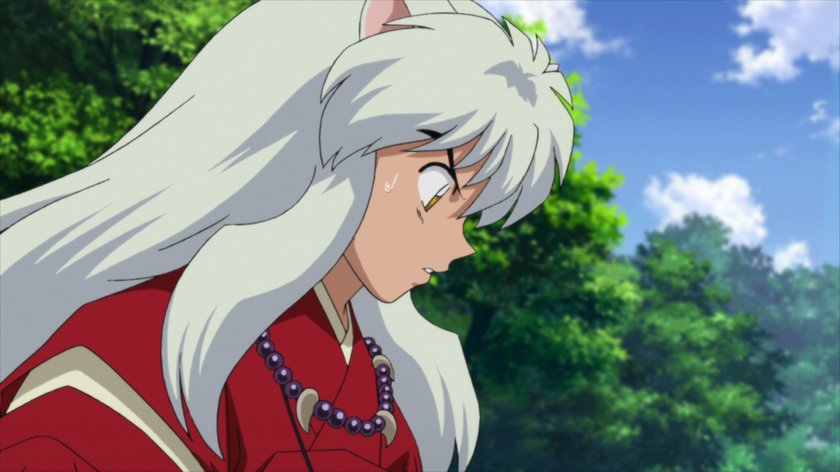
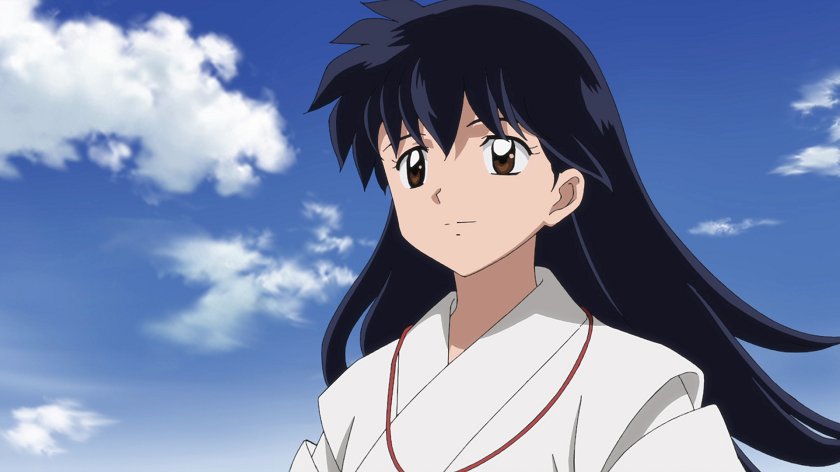
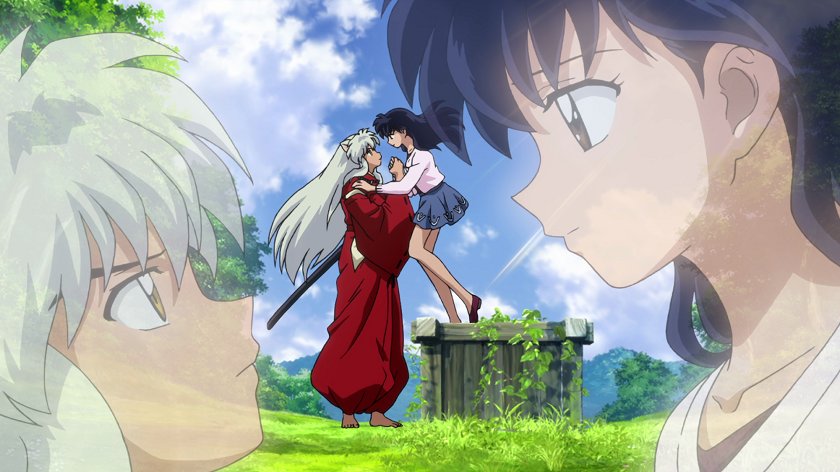
If you don't work out the fundamentals, the character won't come to life.
Next, I'd like to ask how the story of Yashahime: Princess Half-Demon was created. Earlier, Naka-san said, "When I first heard about it, it was at the stage where we thought, 'Maybe it'll be a story about Sesshomaru's daughters,'" but were there any other ideas for the direction of the story after that?
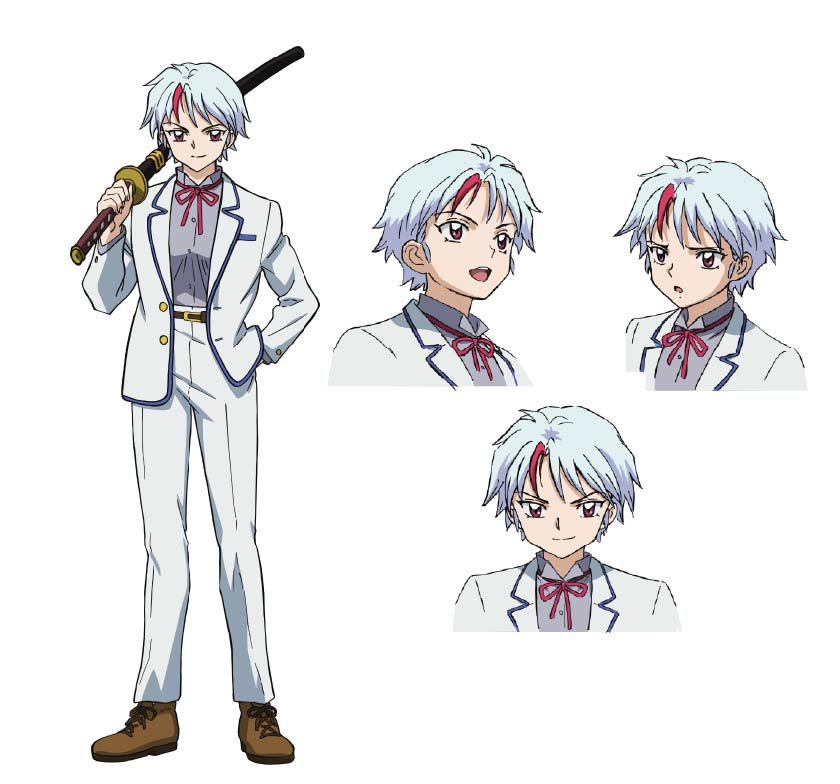
A modern girl living in the Reiwa era. A 14-year-old junior high school student. Ten years ago, she traveled through time to the present day through a tunnel made by the Sacred Tree. She was saved by Kagome's younger brother, Sota, and raised as their girl. She excelled in martial arts, but was often picked on by delinquents, getting into fights and repeatedly transferring schools. She has now transferred to St. Gabriel Academy, an all-girls school. She meets Setsuna and Moroha, who have come to the present day, and tries to return to the Sengoku period in order to help Setsuna regain her ability to sleep. She dresses as a boy because it makes fighting easier. She is actually the daughter of Sesshomaru, who still lives in the Sengoku period.
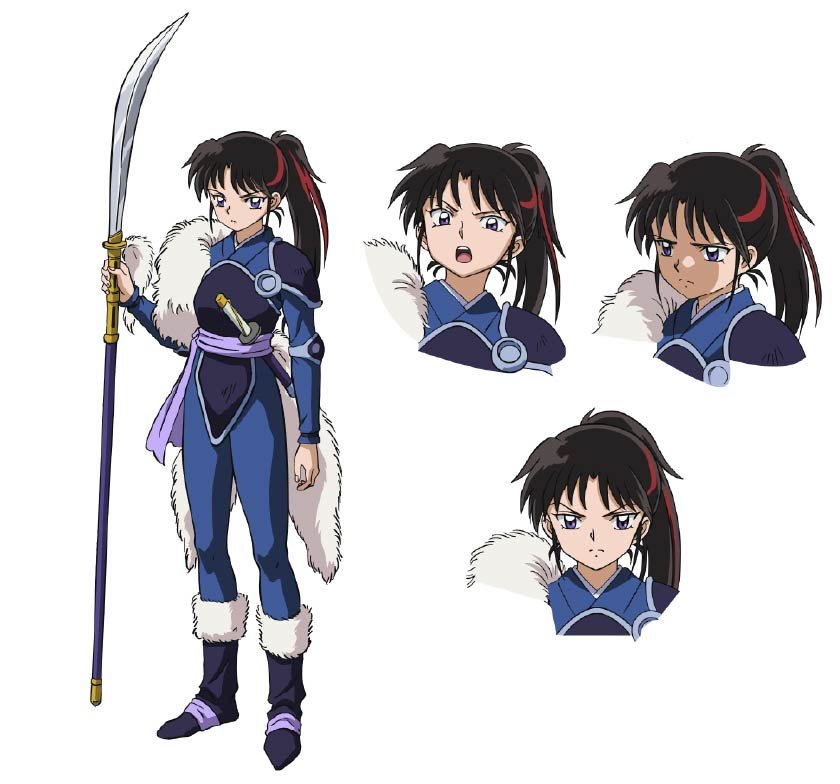
14 years old. She works at a demon slayer agency run by Kohaku, making a living by exterminating demons. In fact, she was separated from her twin sister Towa when she was four years old, but 10 years later, she travels through time to the present day with Moroha. She is reunited with Towa. However, because her ability to sleep was stolen by the Dream Butterfly, she has no memories of her childhood. She does not believe Towa when she tells her she is her sister. When she tries to restore Setsuna's ability to sleep, she ends up traveling back to the Sengoku period with Towa and Moroha... Her calm and collected nature, unfazed by things, seems to be something she inherited from Sesshomaru.
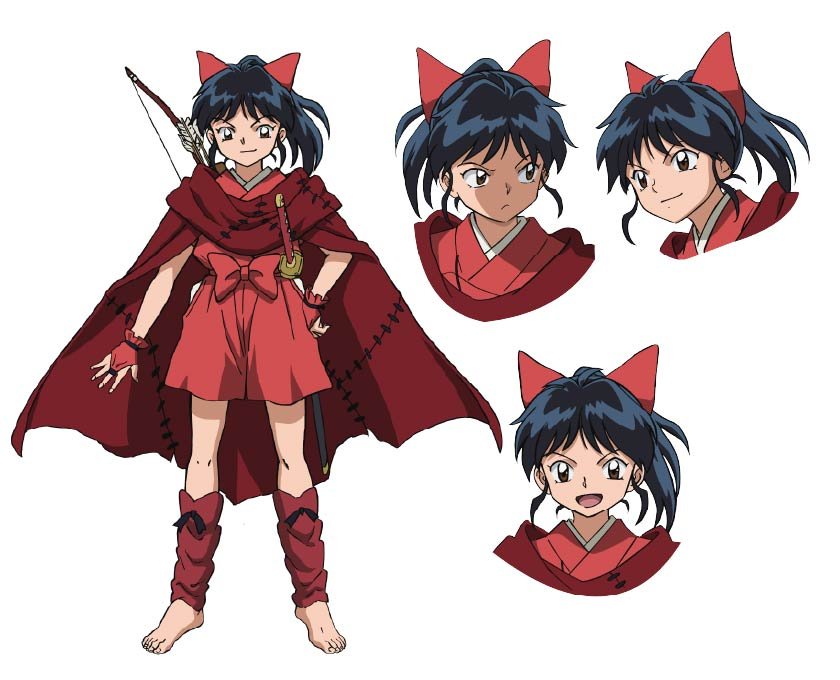
A 14-year-old bounty hunter. She exterminates demons and sells the corpses (their heads, fangs, and bodies) to Jyubei, who deals in bounties. She wields the cursed sword Kurikaramaru. She goes by the nickname "Moroha the Killer." When she applies the rouge contained in a shell case imbued with a red pearl, she transforms into "Beniyasha, Destroyer of Lands" and goes on a rampage. She has a bright and cheerful personality. Compared to Setsuna and Towa, she is the most worldly. She is actually the daughter of Inuyasha and Kagome, but has lived alone since she was a child and knows very little about her parents.
Naka: We just continued on based on the discussion that had taken place at that time.
However, even if we were to make this daughter, it was difficult to decide on the type of daughter she should be, such as whether she should be a twin or an only child. We couldn't decide until the very last moment, when I realized, "If I don't decide on the type of character I want at this stage, I might have to reconsider the broadcast timing as well" (laughs).
Sato: I spoke directly with Rumiko-sensei and we decided on it.
What did Rumiko-sensei say to you?
Naka: We received some feedback about the characters, such as, "Just based on the setting, it's hard to understand why they speak like that," and "It doesn't make sense why they're dressed like that."It took a long time for Rumiko-sensei to understand and accept that Towa is this kind of character, and that's why she's cross-dressing. That was the most difficult part.
Sato: Apparently, Rumiko-sensei had a clear idea of what Setsuna and Moroha were like.
But with Towa, she felt that unless she really fleshed out how she would grow and what kind of core she had, the story would end up being a bit off.
In that sense, the task of deciding on Towa's character was extremely difficult.
Naka: Not only did we come up with the setting, but we also had Katsuyuki Sumisawa (who served as series composition for Inuyasha and will continue in the same position for this project) write a rough script for one or two episodes, and then Rumiko-sensei looked at it and said, "In this story flow, Towa will react like this," and "She will use this kind of language." [3]
After that, we started to refine it, thinking, "But maybe this kind of language is not necessary after all?"
In the story, it was explained that Towa dresses as a man because "it makes it easier to fight," but is that also one of the settings that was solidified in that way?
Naka: That's right. We thought of all sorts of reasons and came up with a lot of ideas, but we ended up settling on something simple.Sato: Rumiko-sensei suddenly said, "Why not just say 'because she's prone to fighting'?" (laughs) We came up with all sorts of overly elaborate reasons, like, "Because something unpleasant happened to her as a girl."
But then we started talking about how maybe it wasn't that... It made us realize that it's okay to have something simple that makes sense.
Rumiko-sensei is involved in the character's images from their very foundation.
Sato: I myself learned a lot from talking with Rumiko-sensei when creating characters. Rumiko-sensei's way of thinking is very logical and very straightforward. "Because she's this kind of child, she wouldn't do this" or "She wouldn't say this."That's why viewers can see what lies beneath. I knew in my head that "characters won't come to life unless you properly work out the fundamental aspects," but this was a real reminder.
For the anime, there are many people, including Sumisawa-san, who come up with ideas, but I thought it must be incredibly difficult to create a manga where only Rumiko-sensei and an editor discuss things together.
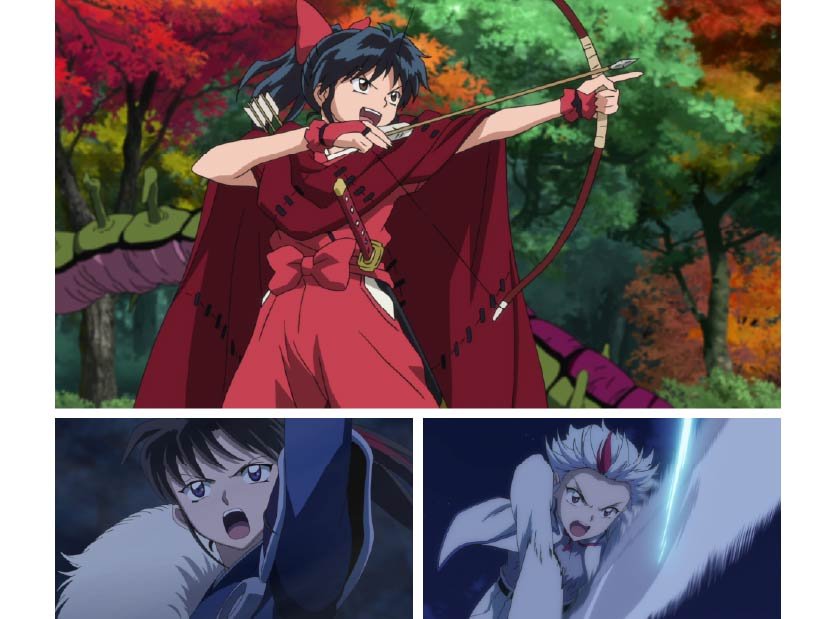
I was conscious of the structure of the story moving forward with Towa as the catalyst.
Once the characters were solidified and the story was being developed, did you ever receive any instructions from Sumisawa-san?
Naka: For Yashahime: Princess Half-Demon, we started with Sumisawa-san writing the first draft of the script.In response to that, we shared our thoughts with him, like, "Considering the future development, we'd like you to pay attention to this part," or "We'd like you to incorporate this kind of setup."
To be specific, at the beginning there was a lot of talk about Moroha's position. Moroha was the easiest character to move around, but we asked him to be as conscious as possible of making sure that Towa and Setsuna were always in the forefront.
Sato: To the writer, Moroha is like a "little Inuyasha." That's why she naturally becomes the center of the story.
But this time, he asked me to write while keeping in mind that the main characters are Sesshomaru's daughters, Towa and Setsuna.
That's because Moroha is that kind of character and very easy to understand, and Setsuna is also oriented towards being the female version of Sesshomaru, but when the vectors of those two stand out, Towa inevitably seems to sink in. It's a common occurrence in original works for the main character to get lost in the eccentric characters around them.
So I needed to make Towa the center as much as possible, and be conscious of a structure in which the story moves forward with her as the catalyst. That's something he particularly emphasized when putting the story together.
Next, please tell us what you think are the charms of the three main characters. First, please start with Towa.
Naka: As for Towa, she has silver hair, inherited from Sesshomaru, dresses in a boyish manner, and has the kind of appearance that women would find cool.But her values are surprisingly modern, and as Setsuna points out in the story, she has a sweet side to her. I don't think there have been many characters with that kind of balance before.
Sato: As Naka-san said, Towa has a half-hearted kindness and sweetness, and how will that change as she travels with Setsuna and Moroha? I hope viewers will look forward to seeing her growth as they watch the story.
Right now, Towa seems indecisive, and some people might be feeling anxious about her (laughs).
What experiences will this protagonist have, and how will her feelings change? I would be happy if, in the end, people think, "Towa's changed, she's grown up."
Naka: I think the fact that there's still plenty of room for growth is what makes her a typical protagonist. On the other hand, Setsuna is a pretty standard character. But on the other hand, she does have a kind side, all things considered.
Sato: She can be a little lovey-dovey (laughs).
Earlier I said she's "the female version of Sesshomaru," but I think her casual kindness is the same as Sesshomaru's. The fact that the character's direction is easy to understand is what makes her so appealing.
Setsuna seems to be cold and distant towards Towa, but she does care about her. Even though she says that she doesn't need to break the curse of the Dream Butterfly, she still accompanies Towa in her search for the Dream Butterfly.
Sato: Just as Setsuna says in episode 3, "I can't just accept it," she can't accept Towa as her sister.But as a person, I think she can see some of her good points. I'd like you to pay attention to how Setsuna draws the line - "I see Towa's good points, but I can't accept her as my sister" - and when she crosses that line.
I wonder if the day will come when Setsuna calls Towa "Big Sister Towa"...
In episode 11, when Towa tries to high-five her, he jumps on her for a moment, and it feels like the distance between them is gradually closing.
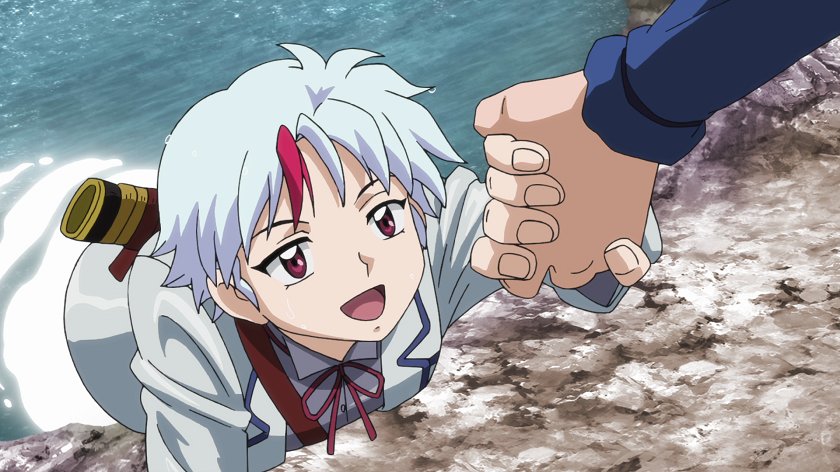
Sato: Gradually, gradually, I guess. I hope you'll look forward to seeing how their feelings intersect when the time comes.
Naka: Even in that episode, it seems like she's getting along well with Towa, but when Towa tries to get her to rest his head on her lap, it's no good. I watched with interest, thinking that that's where the line is drawn (laughs).
Next, how about Moroha.
Naka: Moroha is pretty much what she looks like (laughs).Sato: A hybrid of Inuyasha and Kagome. The way she speaks is similar to Inuyasha, but her actions are similar to Kagome's, and she has a keen understanding.
In that sense, I think she's a character that viewers will find easy to relate to. That's partly because all the comedy in the show right now is focused on Moroha (laughs).
Naka: I think she played a big role in the early episodes, but recently she's been the one to provide the punchlines (laughs). In episode 10 she wasn't even taken into battle, and in episode 11 she got caught up in Setsuna's injuries.
Earlier I said that I was careful not to make Moroha too much of the focus, but as a result she ended up suffering, and I feel a little sorry about that (laughs). But episode 16, which will be aired next week (January 23rd), will be Moroha's episode, so please look forward to it.
Sato: She'll have a lot to do, and it's an important episode that depicts the circumstances Moroha grew up in. We'll also learn about why she needs to earn bounty money and what her relationship with Jyubei is. If you watch it, you'll probably understand why she's been acting the way she has up until now.
In terms of the structure, Towa and Setsuna's past will be revealed in episode 15, Moroha's backstory will be revealed in episode 16, and we'll hear more about Setsuna's childhood in the future. If you can watch up to that point, I think the general picture of the series will become clear.
The first season was a time of sowing seeds, but from now on, the story will be structured so that the fruit will start to fall, so please continue to look forward to it.
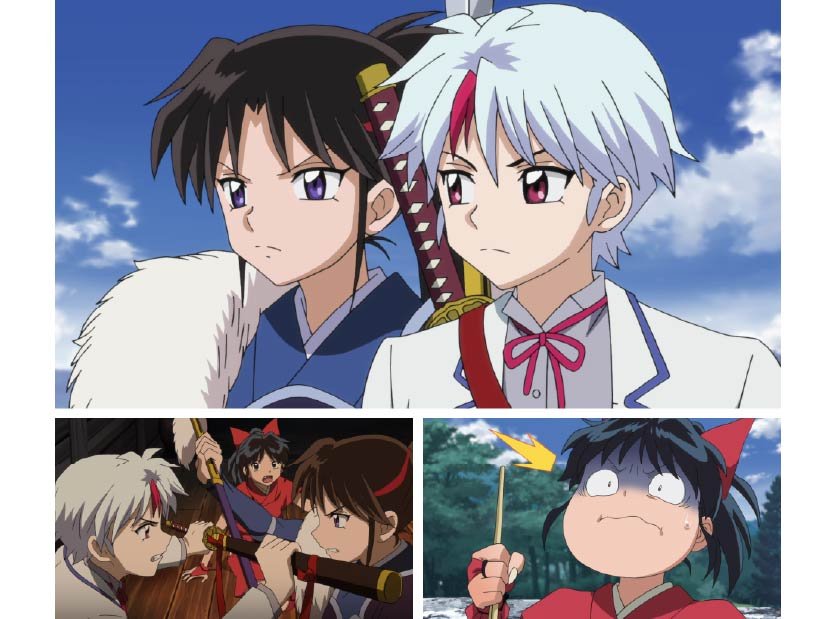
The casting for Miroku was entrusted to the sound director from the Inuyasha era.
Next, please tell us about the casting. What criteria did you use to decide on the cast?
Sato: It was basically an audition process. Sound director Yasushi Nagura couldn't decide on a direction for the characters until the script was somewhat advanced, so once we had a lot of scripts, we gathered people who could imagine the characters and held auditions. [4]It was around the time when the COVID-19 pandemic was becoming more serious, and there were concerns about whether we would really be able to start airing episodes in October.
Naka: The deciding factor was the balance between the three of them. After narrowing down the candidates to a few people, we decided based on what the balance would be like if this person were to play this character.
Sato: Since the drama often features dialogue between the three of them, I developed the characters with that in mind to avoid them all having the same tone of voice or similar speaking styles.
Towa is modern in her way of thinking and acting, while Moroha is driven by her emotions. Conversely, Setsuna is always calm and collected like Sesshomaru, looking at the situation from a bird's eye view, making decisions, and acting only after determining what is best.
I asked Nagura-san to create a balance that would allow each character to have their own unique personality, while also making it easy to understand when the three of them are talking together.
Did you ever consider whether the voices were similar to those of your parents' generation, such as Sesshomaru, Inuyasha, and Kagome?
Naka: I wasn't really concerned about that as a core element. I proceeded with my thoughts based on who would fit the character's appearance, movements in the main story, and personality.When balancing the three of them, it seemed like it would be difficult to adjust the balance between the twins, so I decided on Moroha first, who then takes a step back. In the end, after looking at the balance with Towa & Setsuna, I considered Moroha again and decided on her.
What was the basis for selecting the cast members other than the three girls?
Naka: I left that up to Nagura-san. Although I did occasionally ask for confirmation or my opinion.For example, at first there was an idea to give Riku (voiced by: Jun Fukuyama) a more feminine voice. But when I spoke with Director Sato, he said he wanted a "masculine image," so we're continuing to think in that direction.
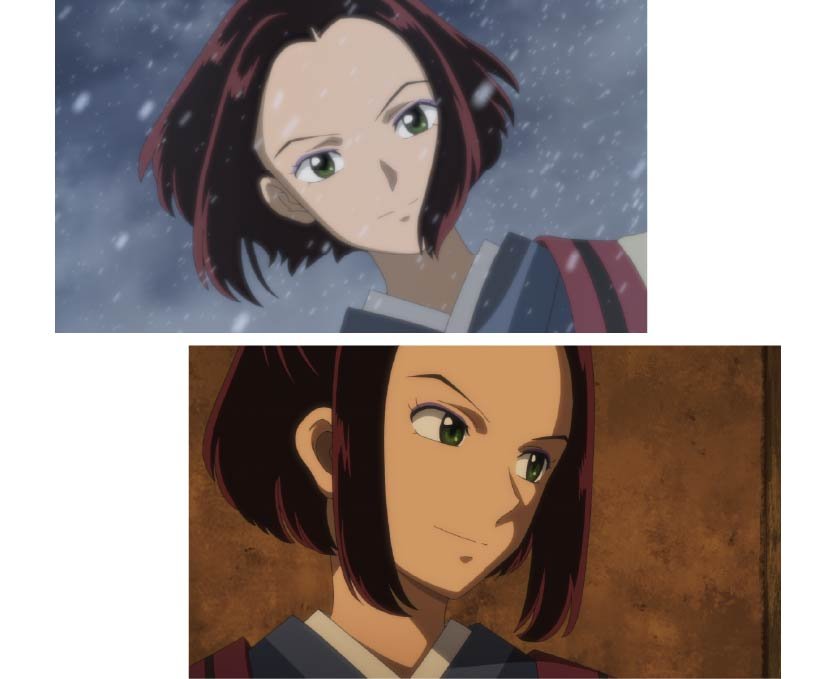
There was also a lot of talk about Miroku, played by Makoto Yasumura in place of the late Koji Tsujitani, but was Nagura-san also involved with the casting of that role?
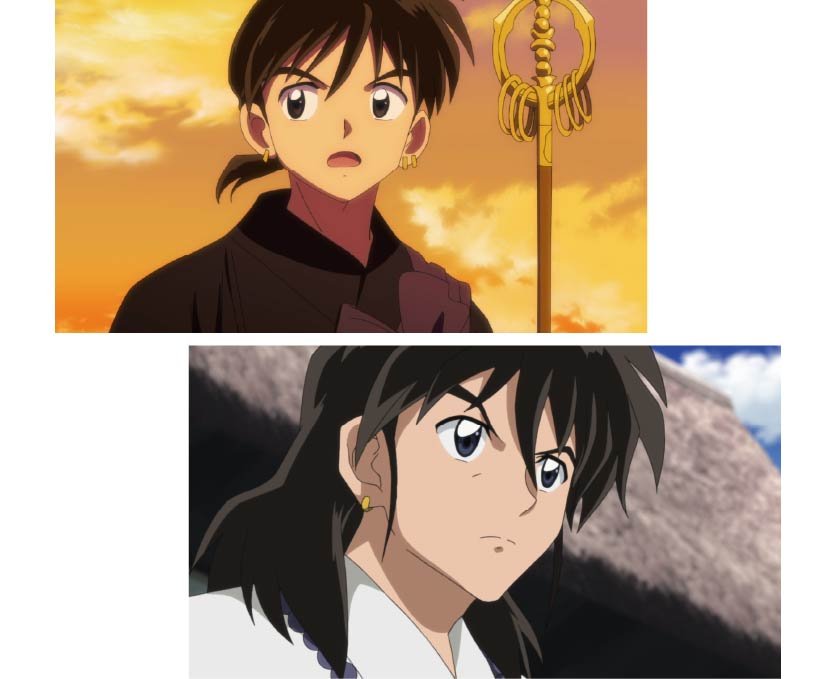
Sato: As for Yasumura-san, I asked Yota Tsuruoka, who was the sound director during the Inuyasha era, to help me choose him. [5] In that regard, he was more in the Inuyasha category than Yashahime: Princess Half-Demon.
Of course, I think viewers were aware of the changes, but when the first episode aired, we received a lot of praise, with comments like, "It's Miroku!" and "It felt natural!"
Even before working with Tsujitani-san on Miroku, I had worked with him many times as a sound director. I was a novice director at the time, but when I met him on the Inuyasha set afterwards, he would say "Thank you so much."
I was very nervous directing, and during the test, I was getting flustered because everyone's lip-syncing wasn't synchronized at all, and he said, "It'll be fine, we'll make sure it's synchronized!" I'll always remember him being so friendly.
It was truly unfortunate that he passed away at such a young age, but I think it was a great casting choice that Yasumura-san, a junior at the same agency, has done so well as his successor.
Naka: Director Sato said, "The atmosphere between Yasumura-san and me this time is completely different from when we worked together on other projects."
Sato: For the first episode, he seemed very nervous, as he had to act alongside the cast of Inuyasha, who are his senior cast members. By the time of episode 13, the Miroku episode, he seemed to have relaxed to a certain extent. He said, "I'm sorry, I was really nervous at the time" (laughs).
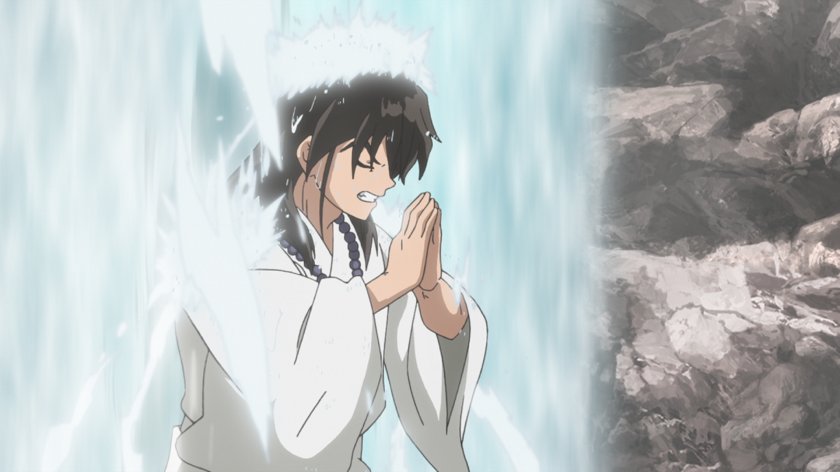
Creating a screen that stands out from the current trends
Are there any special techniques you have put into the production to make viewers feel that this is a work that inherits the worldview of Inuyasha?
Sato: I guess it's the visual design. I don't really follow trends. I use the same cuts and presentation methods used in Inuyasha, which makes it easy to recognize as "Inuyasha-like," and I think it sets itself apart from recent trends.It may sound strange to say it, but it feels like a slightly old-fashioned production. By intentionally using things that make you think, "This is what works from about 10 years ago were like," I'm trying to create an Inuyasha atmosphere.
As for other aspects, the dialogue was directed by Sumisawa-san, and the sound staff was handled by the Inuyasha team, so there was no need for any special explanations. In that sense, it was quite easy (laughs).
For me, Inuyasha was my first project after becoming a freelance director. It was the work that taught me the basics of directing, and I also learned storyboarding on Inuyasha. In that sense, it's a very memorable work.
In the opening story, it was mentioned that "there are some elements that connect it to Inuyasha," and in episodes 9 to 12, the same demons that appeared in Inuyasha appeared one after another, which became a hot topic.
Naka: That part was the series where they were eaten by Moryomaru. Inuyasha: The Final Act was rushed, so I thought I'd include some of the yokai that weren't properly featured in it.
Sato: The only scene we saw of the Meioju was when Moryomaru removed his armor (laughs).
Naka: On their official Twitter account they also explained that "the yokai that appeared in this episode actually appear in Inuyasha." I would be happy if people who watch Yashahime: Princess Half-Demon become interested in Inuyasha as well.
Sato: I think there is a wonderful world to explore there as well, so I hope that you will enjoy Yashahime: Princess Half-Demon while watching Inuyasha.
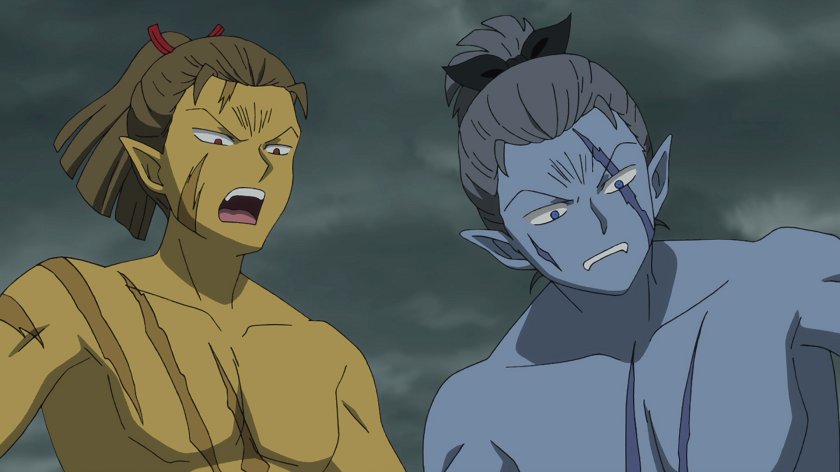
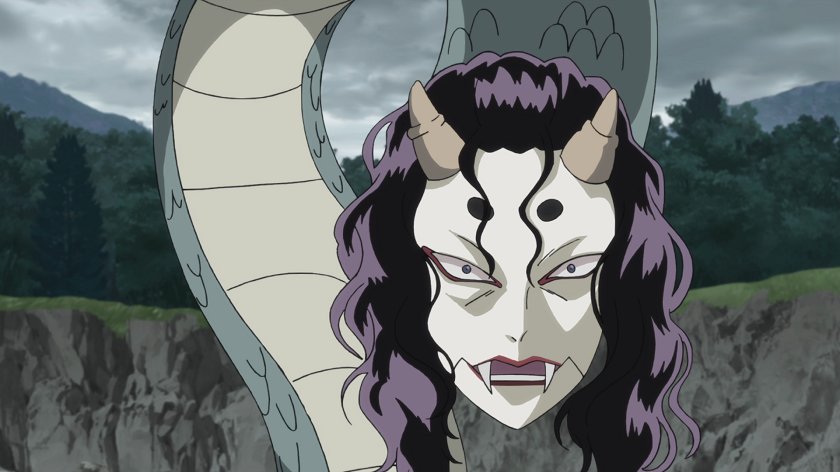
We'll pick out and explain some notable episodes!
From here on, we will be looking back on the episodes that have already aired. We have picked out a few episodes that left an impression on you, so please tell us about any behind-the-scenes stories, memories of dubbing, or memorable scenes.
Episode 1: "Inuyasha: Since Then"Sato: It felt like a class reunion (laughs). That said, because of the COVID-19 pandemic, we couldn't all get together to do the dubbing.
We took turns recording, and everyone would call out "Wow!" when they passed each other in the halls. It goes without saying, it's all about teamwork.
Jaken (voiced by Cho) was constantly ad-libbing, which I thought was very much like Inuyasha.
As the first episode, it's basically an Inuyasha story, but it also connects to episode 7 of Yashahime: Princess Half-Demon before and after. In that sense, episode 1 felt very much like Inuyasha.
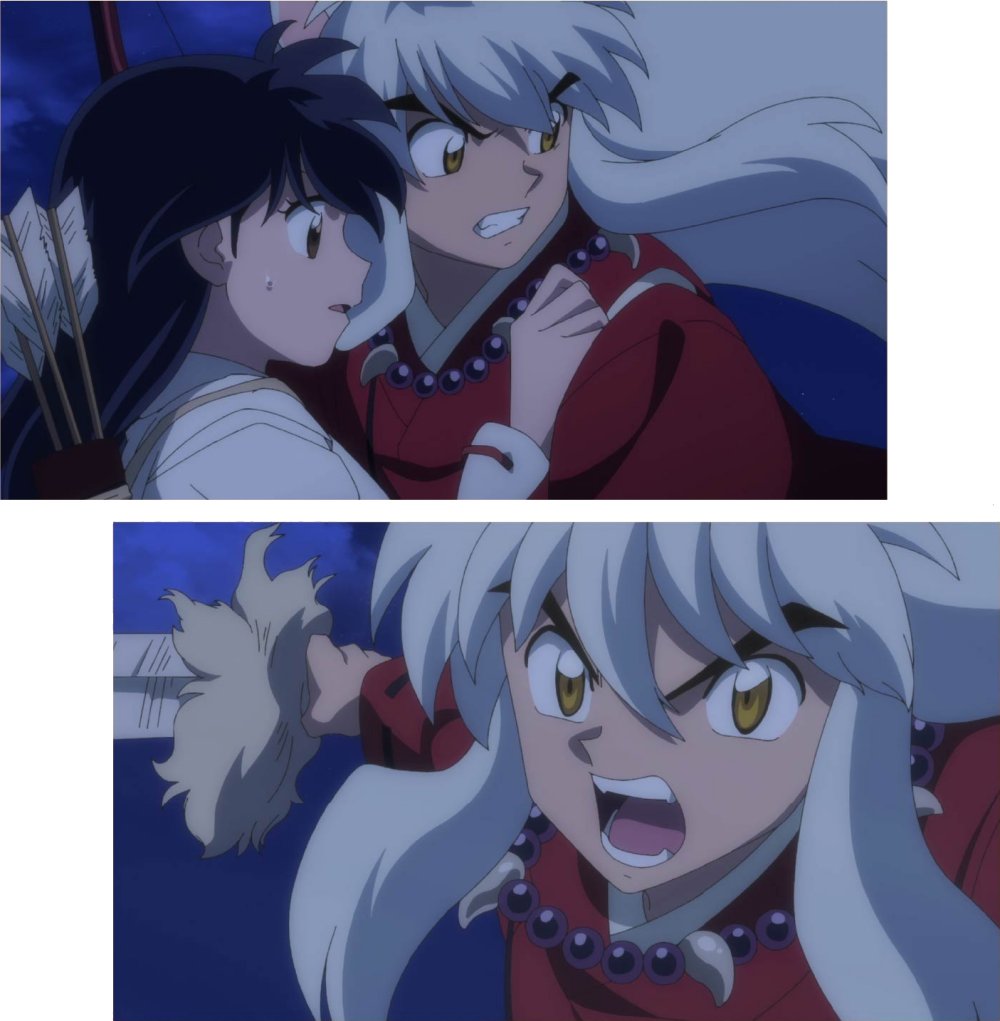
Naka: Director Sato did the storyboards and direction, and when I saw the storyboards I felt like, "Ah, this is Inuyasha. It'll be fine." I felt relieved, like that (laughs).
Sato: Ten years have passed, and the director from back then is no longer with us. The people I worked with have now become directors. It would be a pain to explain things like the rules of Inuyasha from scratch to someone new, so I thought I'd just do it myself (laughs).
Surprisingly, the same people were working on it as 20 years ago, with Yoshihito Hishinuma (character designer for Inuyasha and also serving as animation character designer for this film) as chief animation director, and some of the animators were from back then, so I thought, "Ah, nothing has changed." I remember us making it while talking, "Back then, I never thought I'd be doing something like this 20 years later."
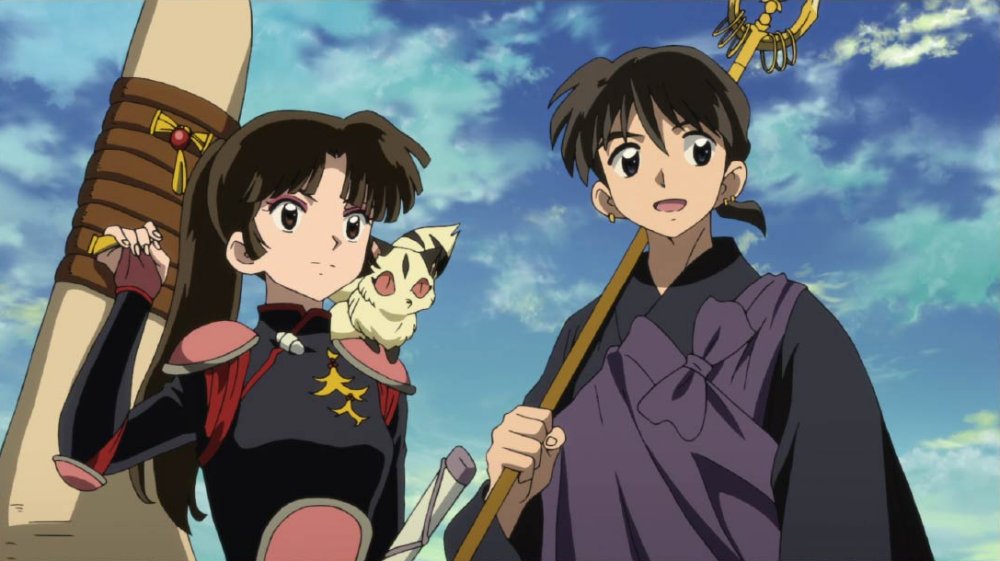
Episode 2: "The Three Princesses"
Sato: It's an episode that could be considered "the first episode of Yashahime: Princess Half-Demon."
Due to the COVID-19 pandemic, all three princesses couldn't do the voice recording together, which made me realise just how important it was to record together with everyone. Even though it's a dialogue drama, if one person records first and the other responds while listening, the atmosphere and rhythm changes.
Nagura-san also tried to coordinate the schedules of the three princesses so that they could record together as much as possible, but in the end they couldn't all record together. In a way, the second episode left a strong impression on me, as it made me realise that this is how we'd be recording from now on.
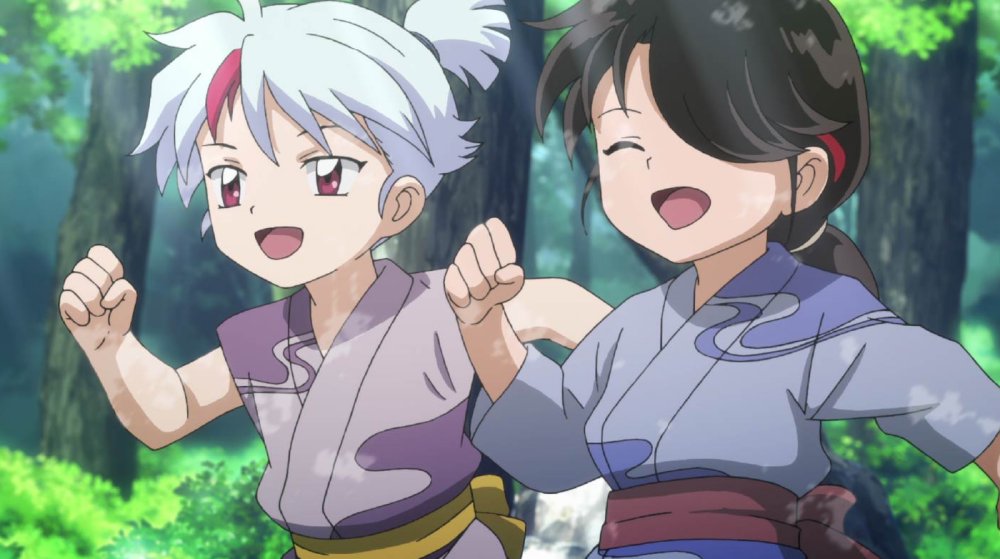
I think that not only Yashahime: Princess Half-Demon, but all of the shows that have been airing since the autumn season are all being done under similar circumstances. Because they are being recorded in chunks, we have to be more careful than ever to make sure we don't forget anything.
I can only be grateful to everyone involved that we have somehow managed to air the shows every week despite these difficult circumstances.
Naka: In episode 2, the first yokai to appear is the "three-eyed lady" who inherits her name from Mistress Centipede, which was also a nod to Inuyasha. Also, there's the delinquent character I mentioned earlier, and Towa's comical faces, so I think this episode really made it clear that "we were inspired by Rumic World."
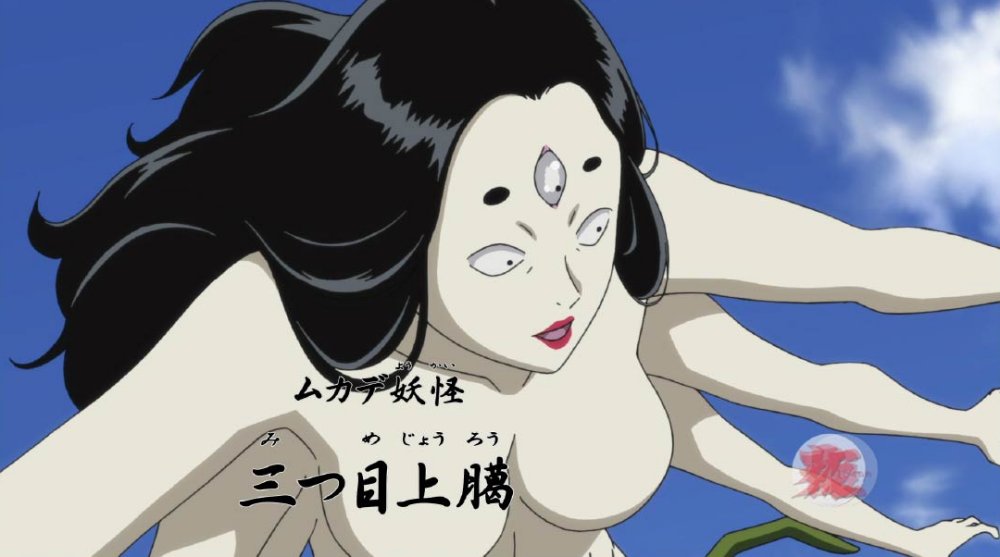
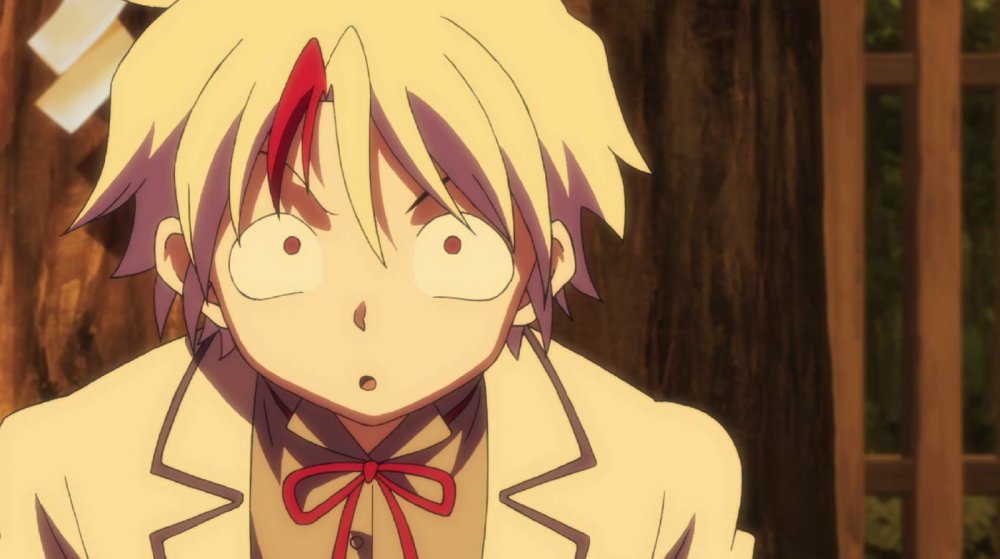
While the original Inuyasha leans towards seriousness, Rumiko-sensei's style gives it a bit of looseness that doesn't go too far.
This time too, there were opinions within the show that we didn't want it to be too serious, including due to the broadcast time. But Director Sato had already incorporated looseness in that way even before we said that directly. He did a great job of creating a balance that doesn't get too serious.
Episode 7: "Meeting Through an Apple"
Sato: Riku, who appeared from episode 7 onwards, is a character whose aim was to liven up the story by suddenly inserting a new character at a point when it was starting to get a bit stale. Rumiko-sensei has also used this technique, and in Inuyasha, Koga and Byakuya of Illusion are perfect examples of this.
From the beginning, Sumisawa-san and I talked about wanting to add a new character to liven things up as the three princesses continue their journey, before viewers start to wonder, "Are we going to keep showing this journey forever?" He's a key figure who stirs up the story.
Also, since all three Yashahime characters are girls, I wanted to include a romantic element like the one between Inuyasha, Kagome and Kikyo. As a result of including that, he ended up feeling a bit like a pickup artist (laughs).
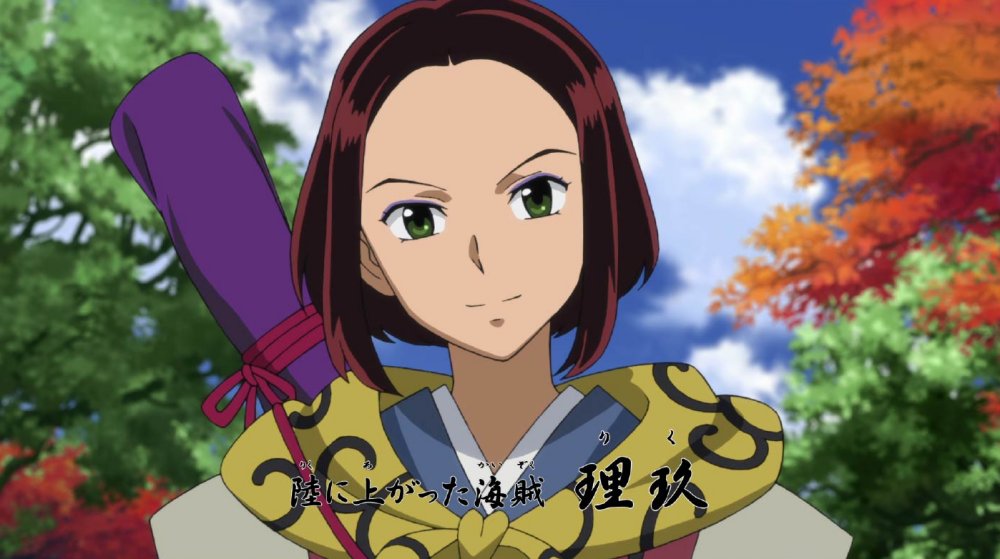
Naka: Episode 7 is also an episode that connects to Episode 1. When I originally composed Episode 1, I had the intention of connecting it to another episode, but after watching Episode 7, I felt it was inserted nicely.
I think it was well structured as a reveal episode, where we find out why Towa was there and what Setsuna and Moroha were doing behind the scenes while Yozume (voiced by: Takumi Yamazaki) was telling old stories.
Sato: Riku will become more involved with Towa little by little from now on, and I hope to show why he is involved as the story progresses.
I felt like we got a good idea of what he's like in episode 15, but I still don't know whether he's an enemy or an ally, so in that sense, he's a character I hope you'll look forward to seeing more of.
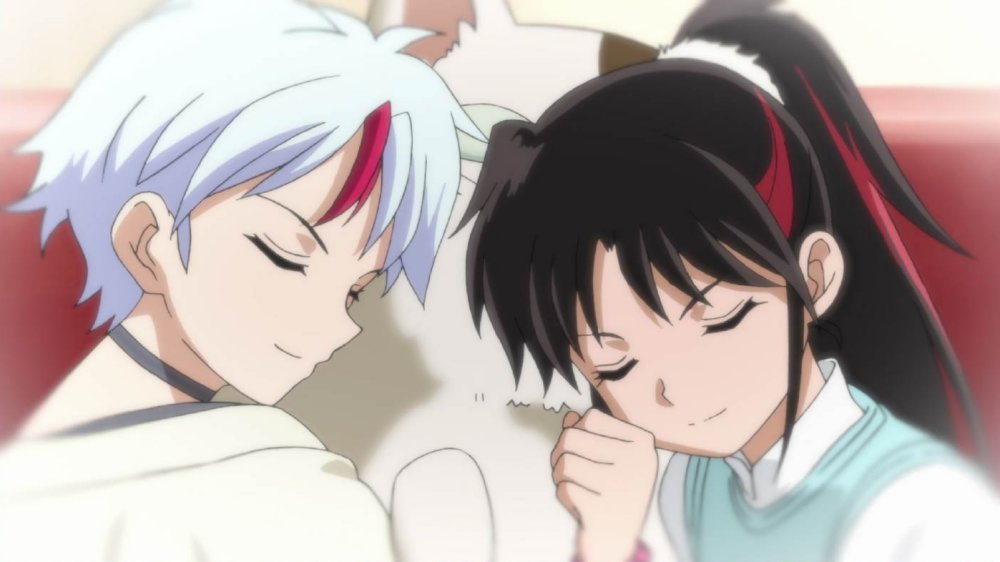

Episode 13: "The Delicious Feudal Monks"
Sato: I included this episode to highlight Hisui (CV: Takehiro Urao) and his relationship with Miroku. Hisui is the son of Miroku and Sango (CV: Houko Kuwashima), and I think everyone is curious about what Miroku is up to, so I thought it would be a good opportunity to introduce what Miroku is busying himself with and to portray the relationship between father and son.
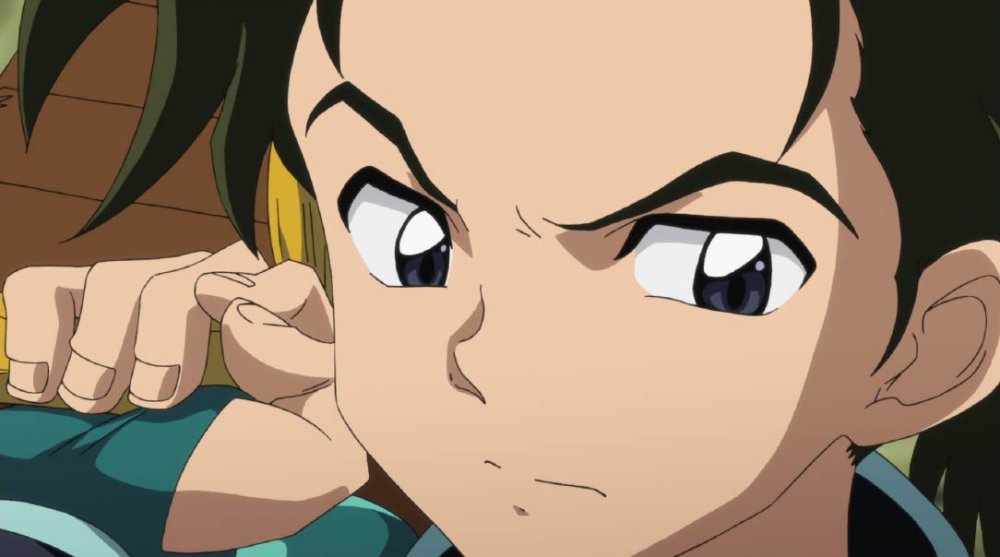
Naka: This is the episode where Hisui finally plays an active role. I felt like we kept you waiting for an entire season. I'm glad we got some time to let him play an active role. Moroha went off somewhere else for a bit (laughs).
And at the end, Setsuna unleashed her true power and took it all away. There were some highlights from Yashahime: Princess Half-Demon, but I also think that characters from Inuyasha like Miroku were brought out nicely.

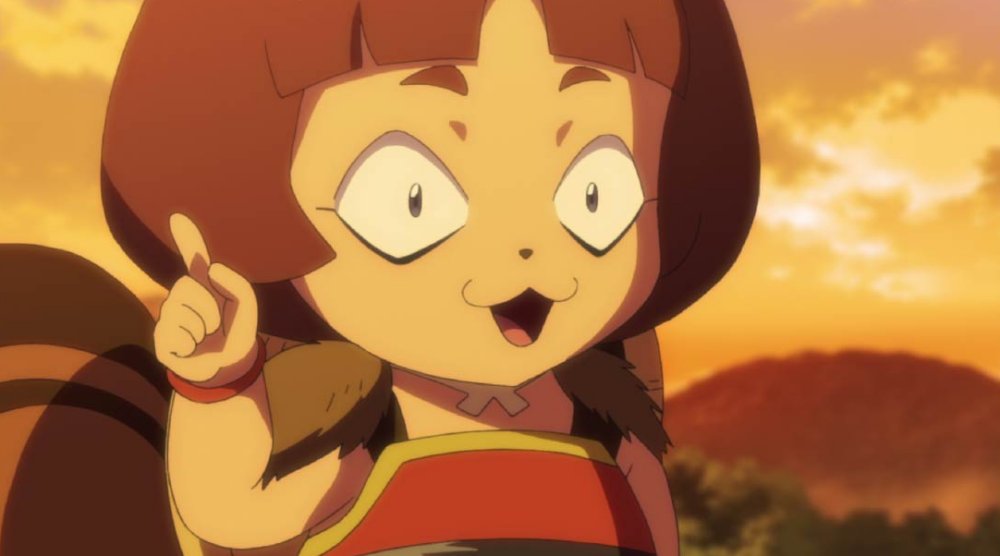
Episode 14: "The One Behind the Forest Fire"
Sato: This episode reveals the truth behind the fire that struck young Towa and Setsuna, and I think it's a realistic episode of bonding, so it's a story that can be applied to the present day.
I also think that this story will cause the distance between Towa and Setsuna, which I mentioned earlier, to start to blur a little. Towa shows anger in front of Honoo, who tore them apart, and Setsuna has some thoughts when she sees this.
I think that if you can sense these things as well, your view of episode 15 will change again.
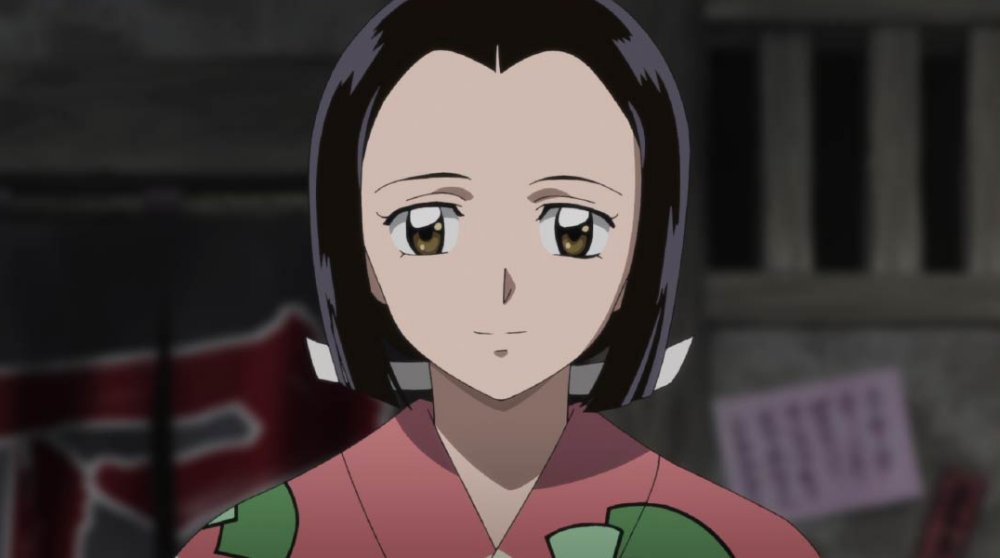

Naka: At the beginning, I thought it was a bit off to use my smartphone as an example of not being able to understand the concept of jealousy (laughs).
Also, when I was rewatching episode 14, I thought it was strange that the gardener and the chef were able to work in such dangerous places without any hesitation (laughs). They're supposed to be normal people, so I thought that was amazing.
Surprisingly, in this world, yokai and humans coexist. In a way, you could say there's a lot of tolerance towards yokai. In Inuyasha, there were scenes where yokai were present in quite a few places, and this episode really impressed me with the kind of worldview it was.
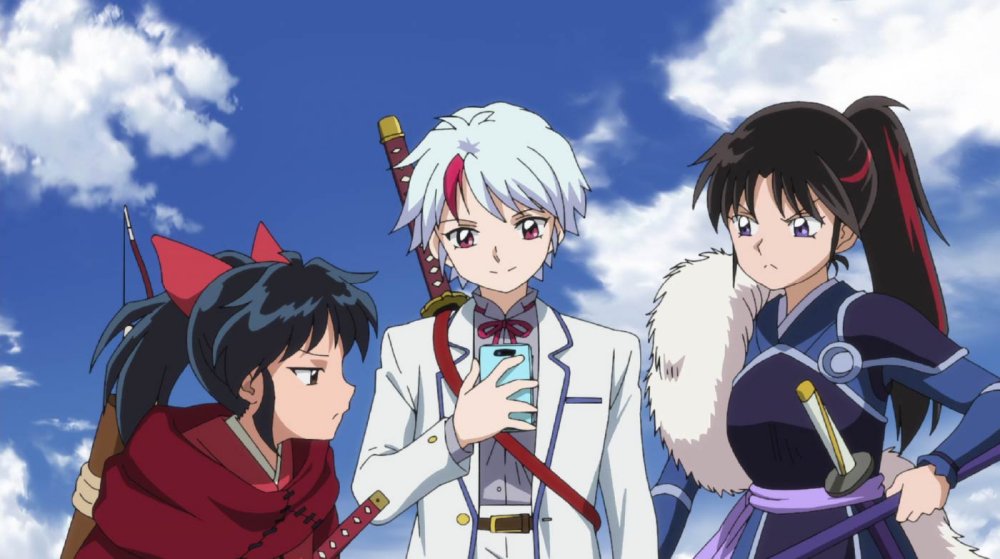
Episode 15: "Farewell Under the Lunar Eclipse"
Sato: Why did Towa and Setsuna have to be raised apart from each other from a young age? This episode reveals the answer, continuing the flashback glimpsed in episode 8. It also makes clear why Kirinmaru and Sesshomaru were at odds with Inuyasha and Kagome, and perhaps we can now understand Sesshomaru's actions.
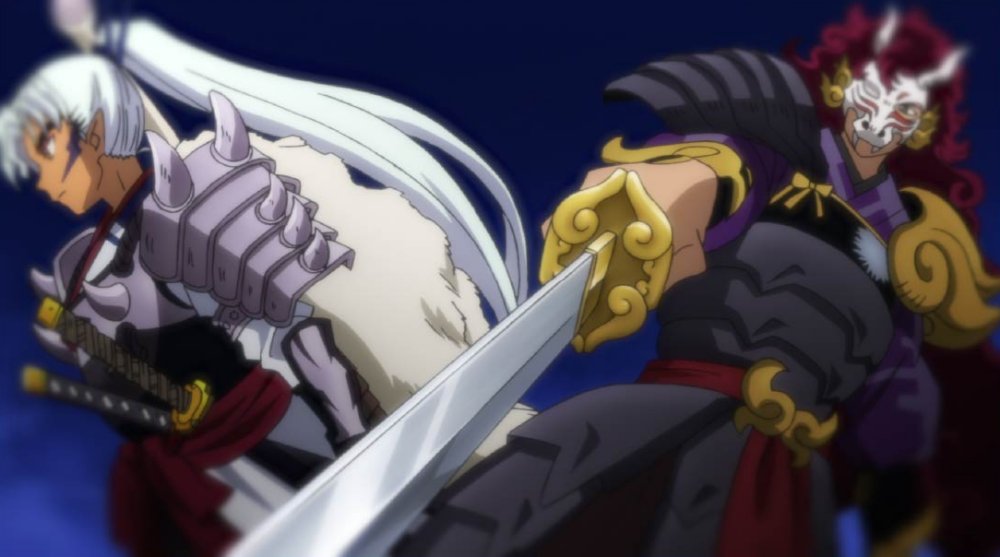
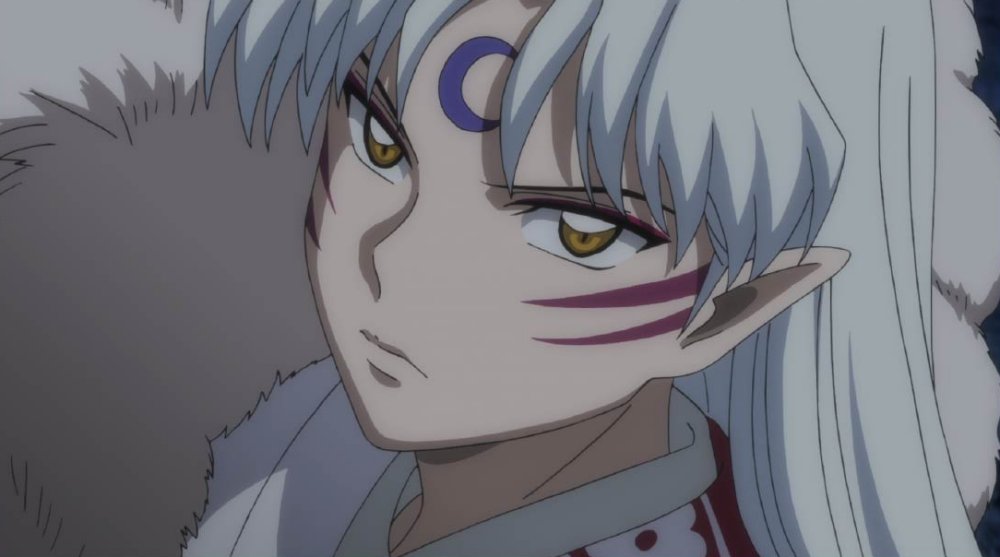
Naka: This episode is a little different. Originally, I thought that the audience would be happier if Inuyasha and the others appeared after the first season had finished, so I decided to structure it so that the past would be told with this timing.
However, it feels completely separate from the main story, and Riku suddenly starts talking, so I think it was a surprise for viewers. Riku came in like a navigator.
The three Yashahime don't particularly know about this, and the episode is aimed solely at the viewers, so I hope you'll keep that in mind as you enjoy what happens next.
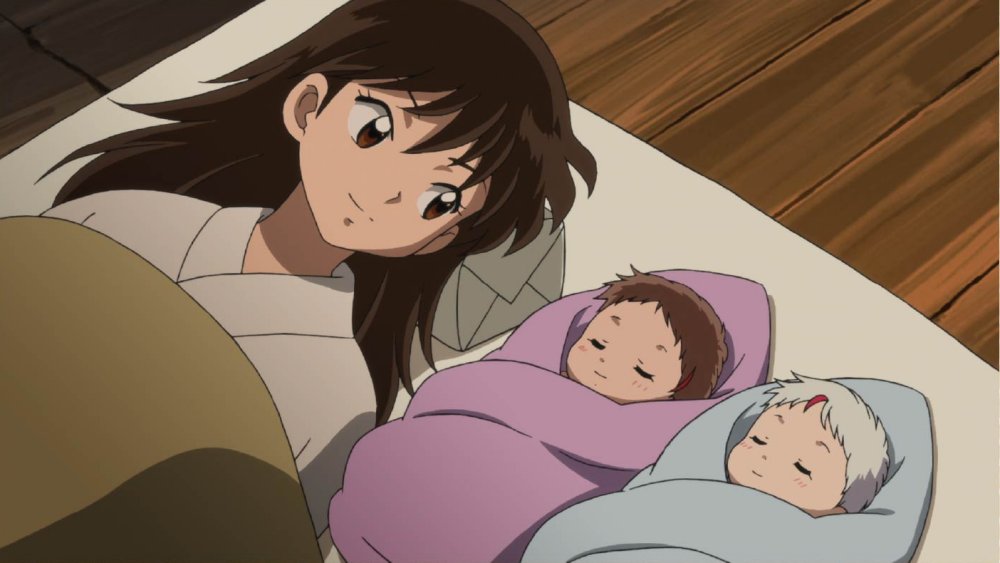
Thank you. Finally, please give a message to our readers who are looking forward to your future works.
Naka: We've just finished the first cour and are entering the second cour, so I think we'll start to find out what we wanted to know from here on out. I hope you'll look forward to the mystery being solved, and that you'll also watch to see how Towa, Setsuna, and Moroha grow. Sato: After episode 15, it becomes increasingly clear what each character needs to do, and the story follows them. I would be very happy if viewers look forward to seeing what happens to the three of them.
Teruo Sato
Born July 17th in Kanagawa Prefecture. Anime director. Made his directorial debut in 1998 with SHADOW SKILL - Kageeda -. Works he has been involved in include Inuyasha, Aikatsu Stars!, Kekkaishi, and Tales of the Abyss.
Twitter(@teruosatou)
Toshikazu Naka
Born March 6th in Tokyo. Producer. Joined Sunrise in 2005. Works he has been involved in include Onmyo Taisenki, Inuyasha: The Final Chapter, Mobile Suit Gundam UC, and Reconguista in G.
Footnotes
- [1] Teruo Sato (佐藤照雄) served as episode director on Inuyasha and Inuyasha: The Final Act and series director on Yashahime and MAO. His other credits include Mobile Suit Gundam Unicorn (機動戦士ガンダムUC/Kido Senshi Gundam Unicorn). Toshikazu Naka (仲寿和) produced Yashahime, Mobile Suit Gundam Unicorn and Hi-Drivers!.
- [2] Michihiko Suwa (諏訪道彦), as mentioned, is the producer of the original Inuyasha series as well as Detective Conan (名探偵コナン/Meitantei Conan). He served as producer on City Hunter, The File of Young Kindaichi (金田一少年の事件簿/Kindaichi Shonen no Jikenbo) and was the planning assistant on Yashahime.
- [3] Katsuyuki Sumisawa (隅沢克之) is a writer having worked on Inuyasha, Moeyo-ken (機動新撰組 萌えよ剣/Kido Shinsengumi Moeyo Ken), Zatch Bell (金色のガッシュベル!!/Konjiki no Gash Bell!!) , Sailor Moon (美少女戦士セーラームーン/Bishojo Senshi Sailor Moon), Dragon Ball Z (ドラゴンボールZ) and Mobile Suit Gundam Wing (新機動戦記ガンダムW/Shin Kido Senki Gundam W). He also served as an advisor on the Yashahime manga adaptation that was created by Takashi Shiina (椎名高志).
- [4] Yasushi Nagura (名倉靖) was the sound director on Inuyasha, his job would be to direct the performance of the voice actors on the show. His other work includes Berserk: The Golden Age Arc (ベルセルク 黄金時代篇 Memorial Edition/Berserk Ogon Jidai-Hen Memorial Edition) and Hell Teacher: Jigoku Sensei Nube (地獄先生ぬ~べ~/Jigoku Sensei Nube).
- [5] Yota Tsuruoka (鶴岡陽太) was the sound director on Inuyasha and Inuyasha: The Final Act. His other work includes The Big O (THEビッグオー/The Biggu Oo), K-On! (けいおん!) and The Melancholy of Haruhi Suzumiya (涼宮ハルヒの憂鬱/Suzumiya Haruhi no Yuutsu). Koji Tsujitani (辻谷耕史), the original voice of Miroku, died of a stroke on October 17, 2018. Makoto Yasumura (保村真) was cast to fill the role of Miroku.
- [6] In Japanese programming and anime a "cours" (クール) is typically a three month span of episodes. Thirteen episodes is the most common length for a cours. Often two cours are shown back to back and then a show will go on a hiatus if it is not aired weekly.

ライブドアニュース
|